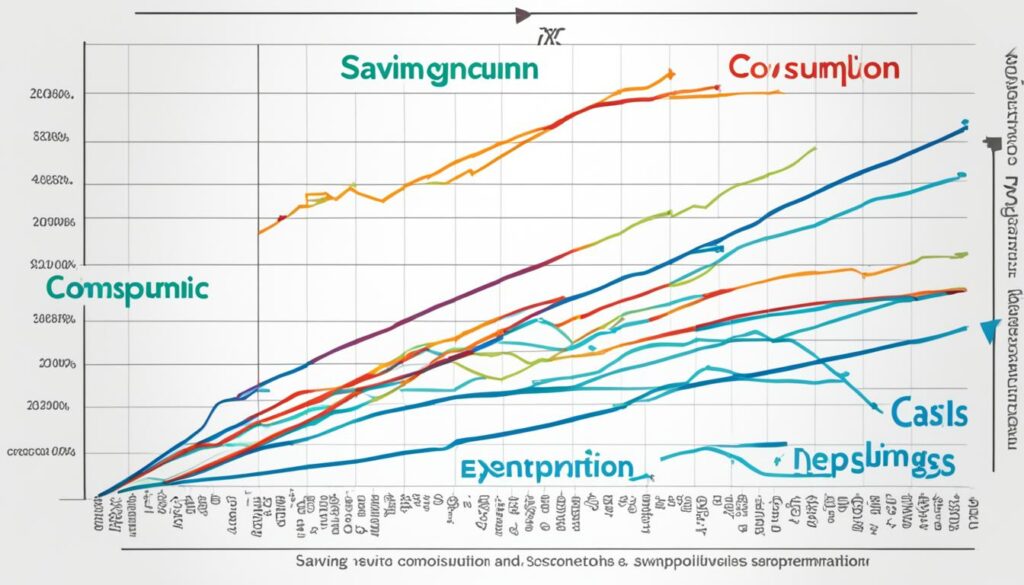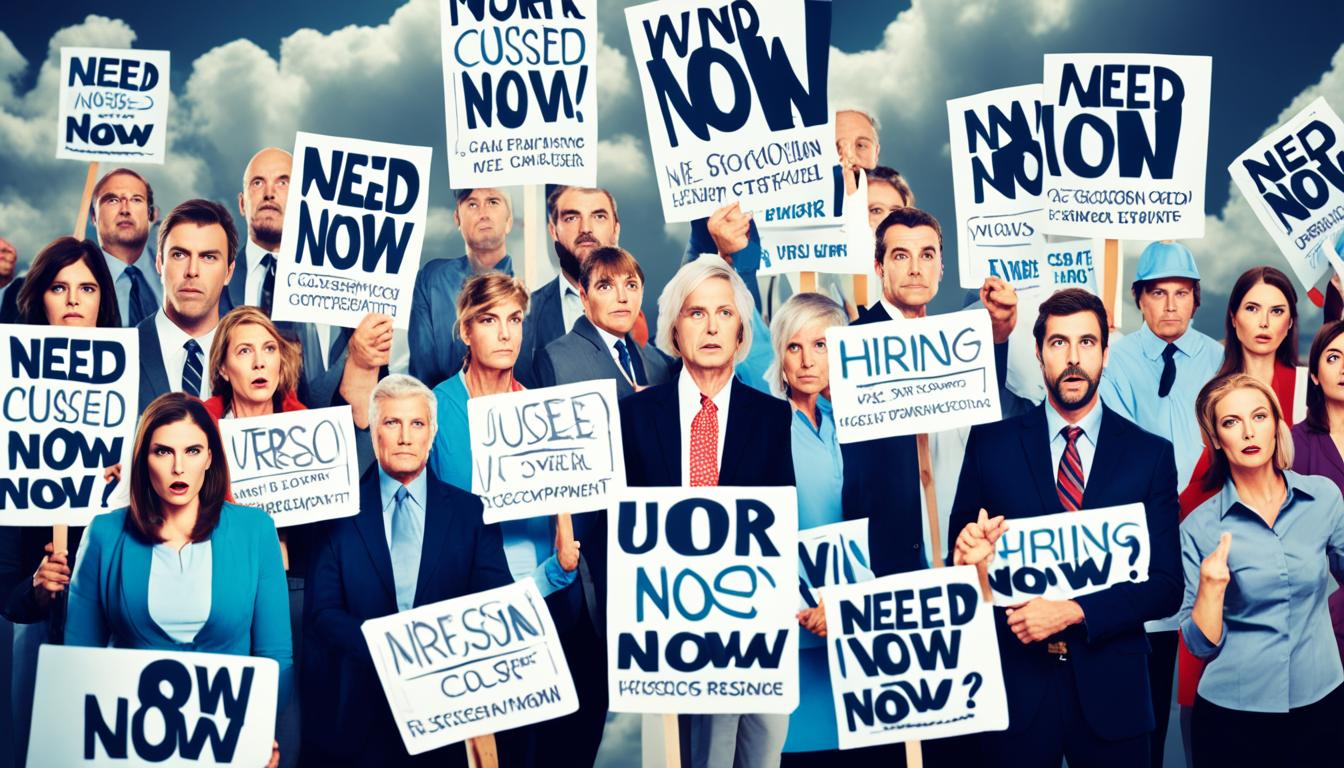“As an Amazon Associate I earn from qualifying purchases.”
Imagine an economic scenario that defies conventional wisdom—a staggering 95% of the labor force is employed, yet the whispers of recession grow louder and more alarming. This, dear reader, is the perplexing landscape of a full employment recession, a rarity within the annals of economic history. You find yourself in an environment where full capacity production ostensibly thrives alongside robust employment rates, yet the economy betrays signs of strain and impending contraction.
How could such an economic paradox exist? The answer lies within the peculiar interplay of factors such as consumption reduction, market rigidities, and the nuanced behavior of savings. With employment rates ostensibly signaling prosperity, the insidious nature of this recession stirs beneath the surface, challenging our perceptions of economic stability. The implications are vast, affecting everything from the macroeconomic policies to your own financial decisions.
This dichotomy prompts a deeper exploration. How do we reconcile the semblance of a thriving workforce with the creeping indicators of an economic slowdown? Insights into this phenomenon may hold the key to navigating and mitigating the impact of such anomalies in the future.
Key Takeaways
- Understanding the contradiction of high employment rates in the face of economic downturn is essential for economic literacy.
- A full employment recession exemplifies the complex relationship between labor utilization and overall economic health.
- Even with a strong labor market, factors like consumption reduction can precipitate a recession.
- Comprehending this economic paradox is crucial for policy makers and individuals alike to make informed decisions.
- Consideration of historical instances and the current global economy can shed light on this unique phenomenon.
- Exploring the role of aggregate demand, interest rates, and fiscal policies will deepen your understanding of full employment recessions.
Exploring the Paradoxical Nature of Full Employment Recession
The term full employment recession encapsulates a seemingly contradictory economic scenario, where a nation’s employment rates soar high while signs of an economic downturn inexplicably emerge. Within this paradoxical economy, conventional indicators of labor market health fail to shield the economy from contraction. As we delve into the components that define this phenomenon, historical instances, and the unique coexistence of employment stability with recessionary forces, it becomes clear that a deeper understanding of these dynamics is essential.
The Definition of Full Employment Recession
A full employment recession stands as a rare breed of economic condition in which joblessness is minimal, and many would argue, the labor market is at its zenith. Yet, despite this, the economy shrinks. In most instances, economic well-being is measured by the robustness of employment figures. However, when these figures hold firm, and the economy still recoils, analysts face a perplexing situation which defies traditional economic models.
Historical Instances of Recession with Full Employment
History does not often record instances of full employment coinciding with a recession, making it a bit of an economic unicorn. Nonetheless, instances do exist and examining them provides insights into the oddities of this economic phenomenon. These sometimes inexplicable instances, untouched by conventional occurrences of high unemployment, hint at underlying issues within the economy that go beyond the job market.
How Full Employment and Recession Coexist
It may seem counterintuitive, but full employment can walk hand in hand with economic downturns. This odd companionship emerges when certain economic sectors, bloated with jobs, do not equally contribute to economic vitality. Alternatively, a saturated job market might mask the reality of a workforce not operating at optimum productivity. In such cases, output dwindles regardless of high employment, painting a deceiving picture of economic health.

| Aspect | Impact on Economy | Relation to Full Employment Recession |
|---|---|---|
| Labor Market Capacity | Limits potential growth | Constrains flexibility during economic downturns |
| Utilization of Labor | Decreased productivity | Contributes to an economy’s inability to grow |
| Sector Contribution | Varies across industries | High employment in non-driving sectors can lead to recession |
In examining the paradoxical economy brought about by a full employment recession, your understanding of the economic landscape broadens. The notions of a healthy labor market and economic prosperity, while often correlated, are not irrevocably tied. Awareness of the dynamics between these two can equip policymakers, businesses, and individuals with the strategic foresight to navigate these contradictory times more adeptly.
The Keynesian Perspective on Savings and Spending
Within the realm of Keynesian economics, the mechanisms of savings and spending take on crucial roles in determining the health of an economy. The central tenet lies in the belief that aggregate demand—the total demand for goods and services within an economy—is the primary driving force behind economic output and overall wellbeing.

Keynes’s Theory of Aggregate Demand
John Maynard Keynes posited that it’s the collective expenditure of households, businesses, and the government that powers economic activity. In times of recession, this aggregate demand tends to falter, prompting a need for intervention to steer the economy back to its optimal state. Below is an illustration of how varying sectors contribute to the total aggregate demand in the economy.
| Component | Role in Aggregate Demand |
|---|---|
| Household Consumption | Directly translates to spending on goods and services. |
| Investment by Businesses | Fuels economic growth and future productivity. |
| Government Spending | Can fill the gap when private spending wanes. |
| Net Exports | Exports add to demand; imports reflect domestic consumption. |
The Role of Interest Rates in a Full Employment Recession
When the economy approaches or achieves full employment but still enters a recession, Keynesian analysts look to interest rates as a lever to pull. Lower interest rates can encourage borrowing and investing, fostering spending while holding back the inclination to save excessively—behavior believed to dampen economic vigor during such downturns. A fine-tuned approach to interest rates can reignite the engines of spending, potentially steering the economy away from the shoals of recession back towards growth.
- Lower interest rates decrease the cost of borrowing.
- Increased borrowing can lead to more investment and consumption.
- Higher investment and consumption may stimulate aggregate demand and thus economic output.
In conclusion, a Keynesian approach to a full employment recession calls for strategic tweaks to monetary policies, with a focus on sustaining and boosting the aggregate demand that fuels the nation’s economic machinery.
Cyclical Interdependencies of Consumption and Production
The modern economy thrives on a delicate balance between what is produced and what is consumed. Understanding the production cycle and consumption patterns can enlighten stakeholders on the intricate nature of the economic interdependence that shapes our marketplace. As consumers, your spending habits play a pivotal role in influencing production decisions and the overall health of the economy.
When you engage with the market – whether buying the latest smartphone or opting for a sustainable living solution – you not only acquire a product or service but also inadvertently signal producers to plan for future offerings. This consumer behavior forms the bedrock of company forecasts and can contribute to either an expansion or contraction in economic activity.
Did you know that your decision to save more and spend less, although financially prudent on a personal level, can have far-reaching consequences in the national economic narrative? A dip in consumer spending can cause a cascade of adjustments in production, often scaling back on labor hours and resource allocations – effects that are acutely felt in a full employment recession.
| Consumer Action | Immediate Impact | Production Response | Long-Term Effect |
|---|---|---|---|
| Increased Saving | Lower Spending | Production Cutbacks | Stifled Economic Growth |
| Eco-friendly Choices | Shift in Demand | Sustainable Production Increase | Industry Evolution |
| Technological Adoption | Market Disruption | Innovation in Production | Job Market Transformation |
As an active agent in the economy, your consumption choices directly influence how sectors evolve and adapt to new realities. The continuous loop of demand and supply dictates the viability of businesses and the stability of job markets. A decline in consumption, especially in times of economic interdependence, may lead to a production scale-down, thereby triggering the feared full employment recession.
- Understand your power as a consumer in the economic ecosystem.
- Recognize the ripple effects of your spending habits on the production cycle.
- Educate yourself on the causes and preventions of full employment recessions.
The stability of our economy is not solely the responsibility of policymakers or corporate strategists; it’s your consumption patterns that can either bolster or undermine the intricate web of production and economic growth. So next time you’re making a purchase, remember: the cycle of consumption and production begins with you.
Capital Investment Dilemmas in an Automated Economy
As you navigate the evolving landscape of the modern economy, it’s crucial to understand the automation impact on capital investment and its correlation with labor demand. With machines increasingly performing routine tasks, employers are shifting their focus toward novel skill demands and navigating the complexities of labor market polarization.
Let’s examine how these technological advancements are reshaping the workforce and consider the requisite skills that you might need to thrive in this new environment.
Effects of Automation on Labor Demand
The rise in automation has dramatically altered the demand for various types of labor. Occupations involving repetitive tasks are most at risk, leading to concerns about technological unemployment. Conversely, there’s an uptick in demand for roles that require complex problem-solving abilities and creative thinking—proficiencies that machines have yet to master.
Shifts in Occupational Structure and Skill Requirements
Those at the forefront of their fields are adapting to these changes by investing in skill development, aligning workforce capabilities with emergent demands. The following table showcases the divergence in skill requirements, reflecting the duality emerging within the job market.
| Occupational Category | Skills in Decline | Skills in Demand |
|---|---|---|
| Manufacturing | Assembly Line Operations | Robotics Programming |
| Customer Service | Scripted Responses | Emotional Intelligence |
| Administration | Manual Data Entry | Data Analysis |
| Transportation | Driving Mechanics | Logistics Strategy |
| Healthcare | Routine Patient Care | Biomedical Technologies |
This transition may create opportunities but also emphasizes the importance of continued education and training to mitigate the risk of technological unemployment. As automation refines the labor market, striking a balance between human ingenuity and machine efficiency will be a defining factor in career sustainability.
Governmental Response to Savings During a Recession
When a recession hits and savings rates climb, it triggers a flurry of government intervention aimed at reinvigorating the economy through various fiscal policy measures and economic stimuli. These initiatives are critical in transforming cautious savers into spenders to boost economic growth and avert the deepening of a recession.
Fiscal policy adjustments can be broad-ranging, but they typically include actions such as tweaking tax rates, increasing public expenditure, and altering government borrowing – each designed to influence the economic situation. Let’s explore how strategic government intervention addresses heightened savings rates and stimulates spending:
- Implementation of tax incentives that effectively put more money into the hands of consumers and businesses, encouraging them to spend rather than save.
- Introduction of direct subsidy programs that support consumer spending and incentivize business investment.
- Infrastructure projects that create jobs, inject funds into the economy, and lay the foundation for future growth.
A hallmark of government intervention during uncertain economic times is a commitment to dispel the paradox of thrift—a scenario where increased saving actually weakens the economy. Here is how various fiscal policy tools are used to address this:
| Policy Tool | Objective | Expected Outcome |
|---|---|---|
| Lower Interest Rates | Encourage borrowing and investment | Rise in consumer spending and business expansion |
| Increased Public Spending | Stimulate economic activity and employment | Boost in aggregate demand and job creation |
| Financial Support to Households | Directly increase disposable income | Immediate elevation of consumer spending |
The focus is clear: activate the economy by replacing consumer and business caution with confidence. When government intervention is successful, it not only dampens the effect of recession but potentially sets the stage for a stronger and more durable recovery.
full employment recession
As the labor market retains strength amid a full employment recession, the juxtaposition of job security against economic downturns influences both consumer behavior and business strategies. The reality of this paradoxical situation poses unique full employment challenges that compel households and corporations to reconsider their approach to finance and operations.
Impact on Households and Individual Consumers
During this nuanced economic circumstance, households face the prospect of stable employment while grappling with a volatile market. It’s a setting that nudges them towards increased savings, propelled by the desire for financial safety nets. Nevertheless, this shift may exacerbate the macroeconomic challenges, as these individual protective measures collectively contribute to reduced consumer spending, a critical engine of economic growth.
Business Strategies During High Employment Recessions
For businesses, recession strategies become critical to weathering the storm. Operational efficiency is now front and center, demanding rigorous cost management and agile decision-making to stay profitable. Moreover, with consumer confidence in flux, companies must adapt their offerings, perhaps focusing on value-driven products or services, to meet the changing demands of a more cautious consumer base.
| Consumer Adjustment | Business Strategy | Market Response |
|---|---|---|
| Increased savings rate | Cost management | Market volatility |
| Reduced discretionary spending | Value-driven offerings | Shift in consumer demand |
| Seeking out deals and promotions | Enhanced promotional activities | Price sensitivity |
| Preference for essential goods | Product portfolio adjustment | Stable demand for essentials |
As we delve deeper into the dynamics of a full employment recession, it is clear that both the consumer and corporate spheres must pivot and adapt to navigate these complex challenges successfully. The interplay between individual financial behavior and overarching business tactics will define how effectively the market can rebound from the repercussions of this distinctive economic phase.
Conclusion
As we stand at the intersection of economic theory and real-world trends, a full employment recession emerges as a signal for sharp reevaluation. You’ve seen how the interaction between high employment and sluggish economic growth casts new light on our understanding of labor, productivity, and economic stability. The nature of this paradox challenges traditional economic models, suggesting the need for keen policy adaptation to navigate the potentiality of future recessions.
Reevaluating Economic Principles in Light of Current Trends
The evolving narrative of automation, globalization, and changing consumption habits demands that policy makers and economists reconsider established economic principles. These shifts in the global economy require a new lens through which fiscal policies are examined and crafted. Considerations now must extend beyond conventional boundaries, striving for comprehensive policy adaptation that encapsulates the diversity of economic trends. The reality of a contemporary full employment recession is not merely theoretical—it’s a call to action, urging for resilient and flexible economic frameworks.
Predictions for Future Full Employment Recessions
Looking ahead, the likelihood of encountering future recessions within the context of full employment begs for proactive measures. Anticipating the impact of technological advancements, demographic shifts, and the need for dexterous policy responses is paramount in sustaining economic growth. Your understanding of these elements can guide preparation and help mitigate the adverse effects of such paradoxical economic events. The full employment recession is not a static concept but one that evolves with our increasingly complex world, highlighting the significance of forecasting and adapting to the economic trends that shape your future.
FAQ
What is a full employment recession?
Can you provide examples of historical full employment recessions?
How can full employment and recession coexist?
How does Keynesian economics explain the relationship between savings and spending in a full employment recession?
What role do interest rates play during a full employment recession?
How does automation impact labor demand and skill requirements?
What strategies might governments employ to mitigate the effects of increased savings during a recession?
How do full employment recessions affect individual households and businesses?
Why is reevaluating economic principles important in understanding full employment recessions?
What are the predictions for future full employment recessions?
Source Links
- https://www.rba.gov.au/education/resources/explainers/recession.html
- https://www.whitehouse.gov/wp-content/uploads/2022/12/TTC-EC-CEA-AI-Report-12052022-1.pdf
- https://www.forbes.com/advisor/investing/what-is-a-recession/
- https://www.whitehouse.gov/cea/written-materials/2022/07/21/how-do-economists-determine-whether-the-economy-is-in-a-recession/
- https://www.businessinsider.com/personal-finance/recession-vs-depression
- https://www.mckinsey.com/featured-insights/mckinsey-explainers/what-is-a-recession
- https://www.investopedia.com/terms/d/demandshock.asp
- https://en.wikipedia.org/wiki/Recession
- https://www.mckinsey.com/capabilities/risk-and-resilience/our-insights/somethings-coming-how-us-companies-can-build-resilience-survive-a-downturn-and-thrive-in-the-next-cycle
“As an Amazon Associate I earn from qualifying purchases.”

